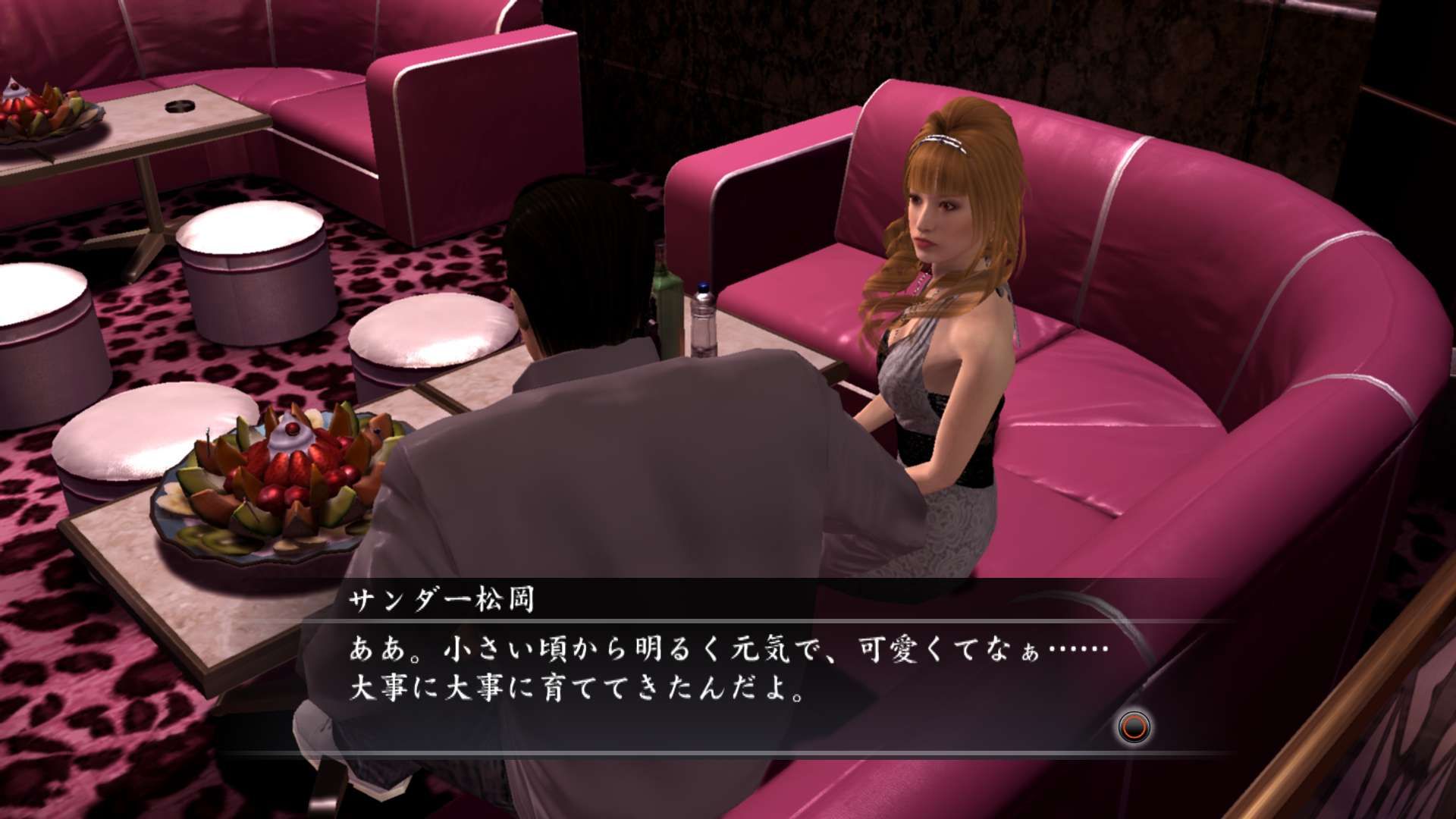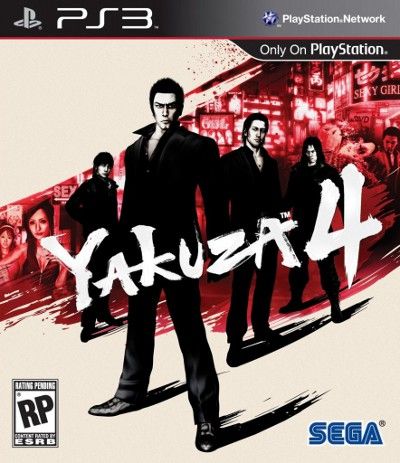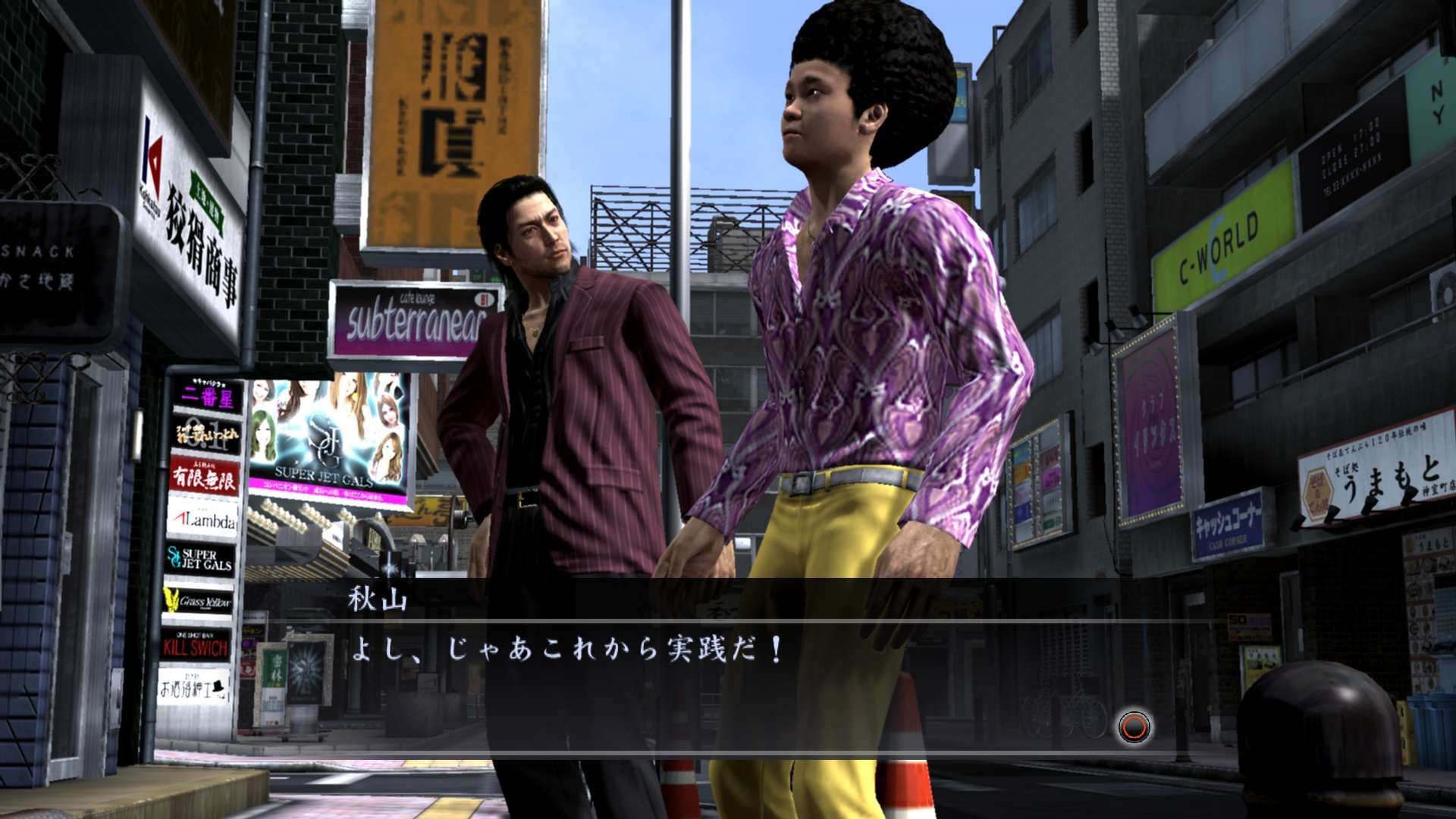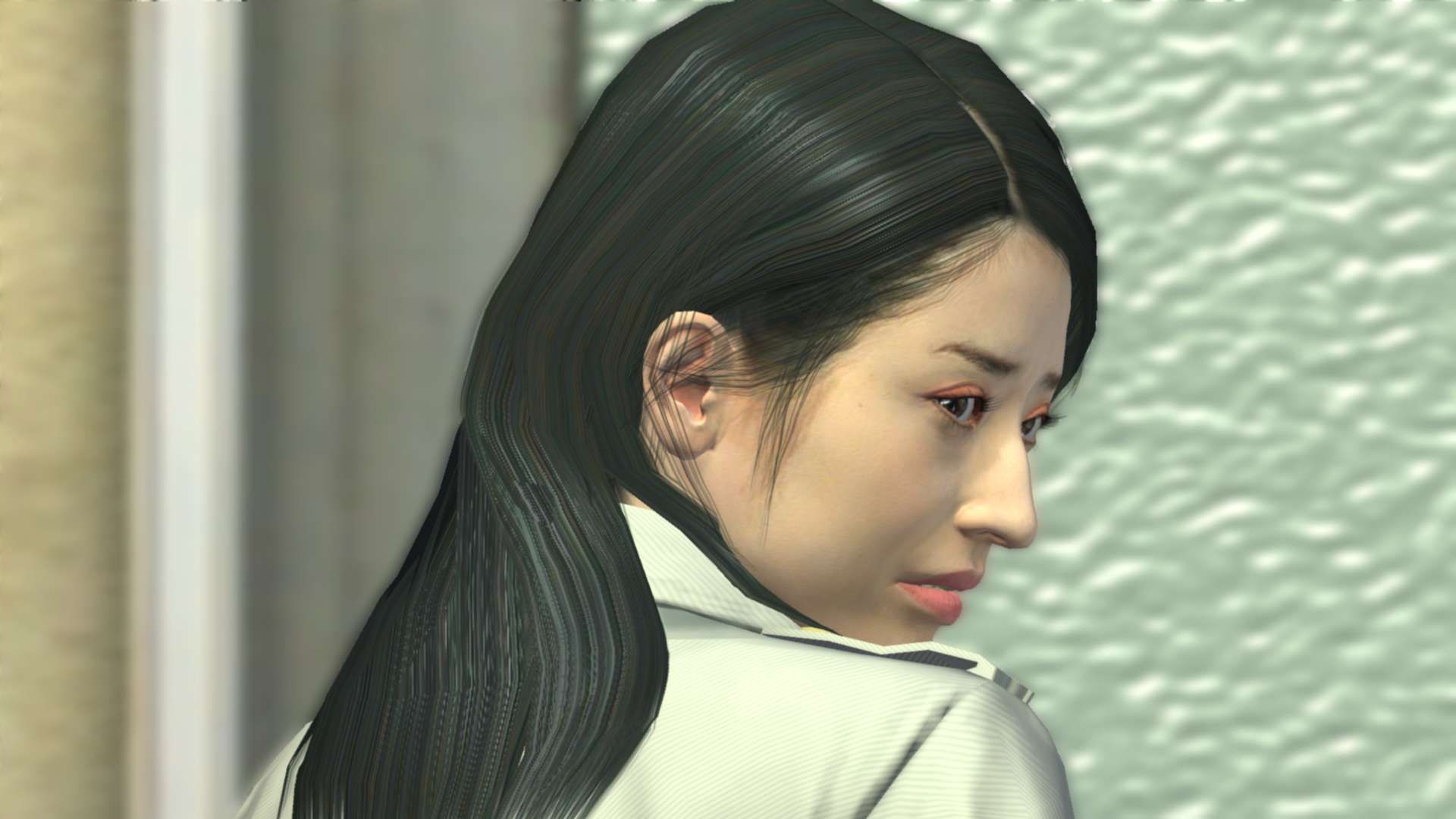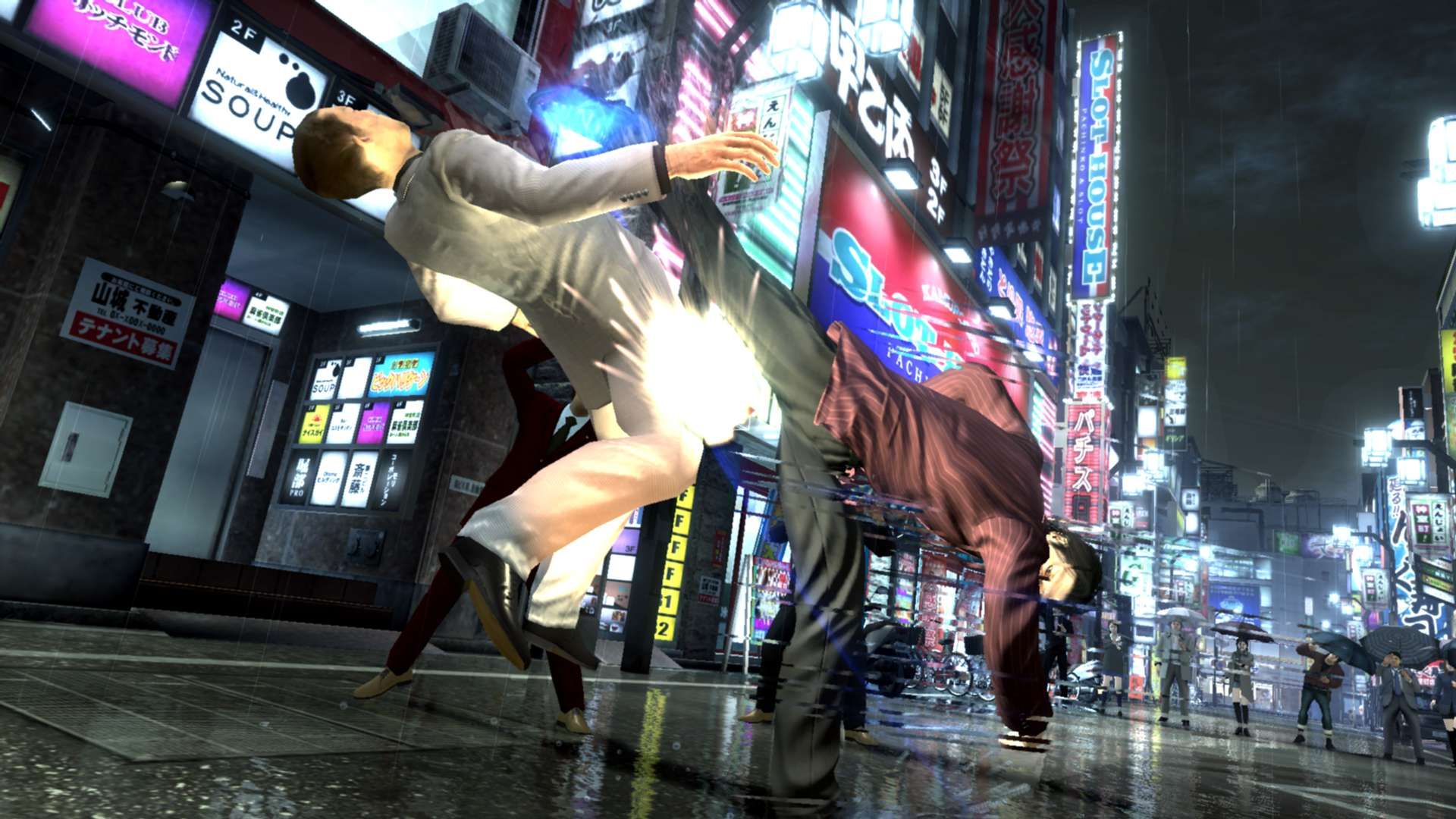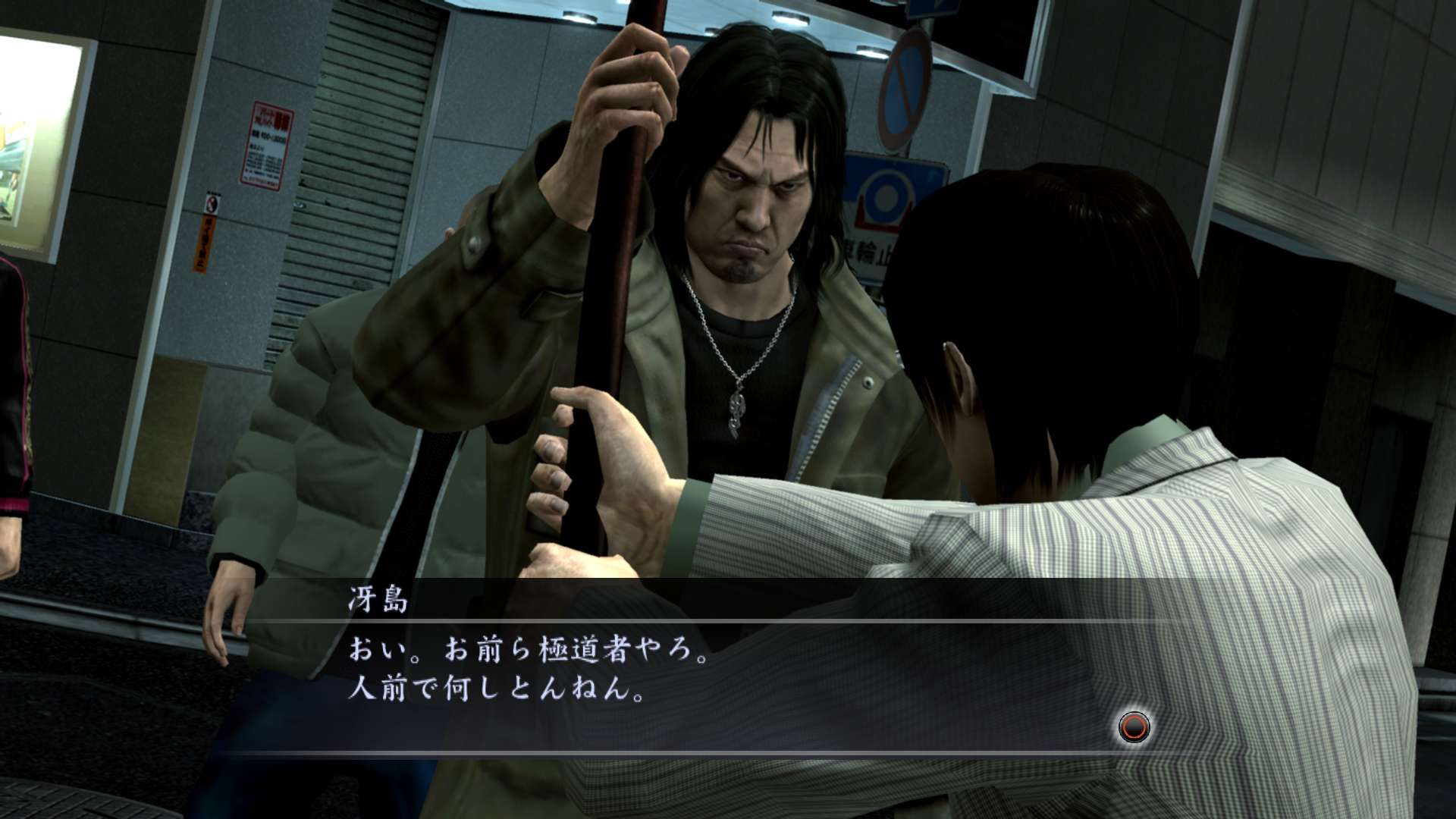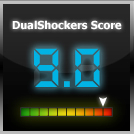Yakuza is one of those franchises that has always intrigued me, yet I never really delved into it deep enough to appreciate all the little facets of its identity. This franchise is somewhat of a red-headed step-child in the realm of realistic, open-world action games, compared most often to the likes of Grand Theft Auto. Given the popularity of that particular franchise, I wonder why more gamers don’t give Yakuza the praise it deserves, and believe me when I say, it does just about everything very, very well.
The story itself picks up in March 2010, which is after the events of Yakuza 3 and the series hero, Kazuma Kiryu, being injured. At this point, he’s recovering nicely at the orphanage he runs near Okinawa. But, this time around, instead of focusing solely on Kazuma, you take on the role of three additional men, who’s individual plots all wind together to eventually intermingle at integral parts of the story.
While delving into the particulars of the story will be very tiring, not to mention spoiler-heavy, let’s just say that small inter-clan violence ends up escalating, bringing events that happened in the past and those of the present together in what may be an all-out clan war, if someone doesn’t put a stop to it. There are cover-ups, interesting revelations, plot twists that you just straight up won’t expect and a load of other nuances, oddities and complexities that makes this one of the most hard to follow yet engrossing plots I’ve ever experienced in a game of this type. And, you know me, that’s right up my alley, even though Yakuza wouldn’t be classified as an RPG.
A huge part of these titles is the ambiance that is created when you walk through the streets of Tokyo, or, really, any outdoor location within the game. It seriously makes you feel like you’re living, working and taking part in everyday life in Japan and I absolutely love that. I haven’t felt that sense of immersion in Japanese culture since playing the Persona titles. It’s really a shame Sega cut some of that out in Yakuza 3, the previous entry in the franchise, when they brought it over. I’m eternally grateful they changed their minds about Yakuza 4. I’ll talk a bit more about this later, but I bring it up here because this whole ambiance helps you fit in to and understand the story, the characters and the world the characters live in. It’s nothing short of amazing how well the world and characters work along with the plot to squeeze every last ounce of flavor out of this tale for the player to take in and digest.
The visuals, while not the best they could be (considering it looks almost like Yakuza 3), do get the job done nicely. The best example of these, and probably the best looking parts of the game, is obviously the over world of Kamurocho, the exterior city portion of the game where you spend the majority of your time. That’s a good thing, because this is where most of the game’s free-roam happens. The problem here occurs when you go underground, inside buildings and such. The quality of the textures isn’t the best. In many of these situations, however, there is other action that you really should be concentrating on aside from trying to find faults with the visual acuity of every last nook and cranny. It should also be stated that, aside from a few areas, the lower visual quality in certain portions (Little Asia, most notably) does not detract from the immersion. I certainly still felt like I was winding through the back alleys of Kamurocho.
Another quality to the visuals that was downright amazing is the character animations. While sometimes the characters looked plastic and fake (mostly the side story characters), the main characters and those they interact with during the plot have rather stunning facial animations. While it isn’t anything on the level of L.A. Noire facial animation, the various nuances, pauses and glares from the characters, as well as the way they move their head and eyes, really pulls you in so you get a sense of feeling exactly what the characters are feeling and thinking how they think. This is all highlighted by the great camera angles that are used during the cut scenes.
I’m going to go out on a limb here, since many reviewers of this particular title are knocking off points for cut scene length. I’m going to say that I think more of the cut scenes should have been fully voiced scenes, and less should have had text only. I don’t care if the side stories are text only, or little bits from a phone call here and there. However, I talk a lot about immersion and, to me, it pulls me out of the game and the story to have main story dialog segments hop between fully voiced cut scenes and standard text chat that requires action on the players’ part to scroll through. Although, in the interest of full disclosure, there were several story segments that were so long my DualShock 3 controller shut off. Not that I didn’t enjoy them, mind you, but I figured I’d lay it all out there.
The Japanese voice acting is top notch, and combines nicely with the body language used in many of the cut scenes to frame the various event moments as they happen. You could feel the despair in Lily’s voice, for example, which fits in nicely with her character and the events of the story. Many other character’s voice actors exhibit the same great inflections and quality to their voice. If there weren’t English subtitles, it’s true that you wouldn’t really know what they’re saying, but you could still understand the tone of every conversation based on the voices alone, and that really says something about the quality of the actors portraying these characters.
I did run into a bit too many typos in the sub-titling, but they boil down to small grammatical and spelling mistakes, and don’t particularly detract from anything worthwhile.
As you progress through the story, you’ll encounter both random and scripted battles, which are basically action-oriented beat-em-up segments that are typically over pretty quick, with the exception of boss battles. It’s important to note that, while battles are a key component of this title (as they are with all previous Yakuza titles), they don’t particularly make the game. No, that falls to the story and the ambiance, as I’ve already mentioned.
Not a whole lot changes here from previous games. When battle starts, you fight! You have several basic commands, such as attacking with your fist, kicking and blocking. These can all be combined in various ways to create combos that tend to knock the enemy down or otherwise hamper their attempts at beating your face in. As you attack and perform other actions, you build up heat, which opens up more abilities to use and just generally makes you stronger. There are also often times objects scattered throughout the battlefield or that are dropped by defeated enemies that you can use to jab, poke, smash and throw at other opponents. It’s quite fun smashing a bottle over your enemy’s head, then using the glass shard left over to take a few swipes at them.
The results of battle are experience and money gained, and each time you level up you gain three souls to use to unlock and upgrade abilities. You also get the typical health, strength and defense increase that usually comes from leveling up in just about any game of this type. There is a lot of customization that comes along with what abilities you unlock and what gear you equip on your character. Although, if you blow through the main story without doing much side stuff, it will feel like certain abilities aren’t even worth it.
I found a lot that battles tend to devolve into a button-mashing contest, especially in boss fights where you find one strategy that works and go with it. If you screw up, you’re toast, so you might as well milk a certain strategy for all it’s worth. However, these button-mashing stints are broken up by quick time actions, again, especially during longer fights. If you perform the action correctly, you damage your opponent, if you fail, you take damage, it’s as simple as that. Some of the animations during these special segments of battle are pretty sweet, though!
Aside from battles and progressing the story, the sheer amount of stuff to do in this game rivals most 60-hour, hardcore, spikey-haired JRPGs, to say the least. There's a hostess dress-up game, bowling, pool, ping-pong, a massage parlor, side stories, games to play, things to witness, views to be had and just an awesome world to explore. I swear I could spend upwards of 50 hours just doing side stuff. Each character has unique features in their side questing that mix things up a bit. For example, when you're playing as the detective, Tanimura, you have a police radio in your ear, so you pick up on events that are going on around the city. You can either chose to show up and help out, or just ignore them. Eventually another message will come across saying that the event has been taken care of if you chose not to respond. It actually makes you feel like you're on the job, so to speak.
The world of Yakuza 4 is a living, breathing, although a bit embellished, mirror of the heart of Tokyo, so it is heavily influenced in Japanese culture. You will see some things that seem a bit odd to you. For example, I couldn't particularly get over the slight feeling of degrading women I felt after going through the mandatory tutorial on how to dress up your own hostess. I will give this up to culture differences, because, frankly, this is what we asked for and were so vocal about when they took out the hostess club content in Yakuza 3. I don't think we really have a right to complain about something along those lines.
So, let's take note here - I found very few actual issues with this game. The visuals weren't the best, especially in certain underground and interior locations. I also thought the tutorials were excessive. It's cool that some of the side story tutorials (like the aforementioned hostess mini-game) were integrated into the story, so you at least got a taste of the extra content even if you didn't want to pursue it. However, when the exact same tutorials come up for certain gameplay mechanics each time you switch to a new character, that's a bit overkill.
An example would be Revelations. These are events that happen sporadically around the city which you can witness, take note of (how you do this is different with each character) and learn from. You'll gain new abilities this way if you choose to check them out. Each time you switch characters there's a mandatory tutorial on how all this takes place, and it is quite bothersome after the second time. There are also a few more overbearing tutorials that you'll have to wade through four times, as well.
As big a fan as I am of side stories, I'm not a fan of forcing them on you. I can understand some mandatory mini-game tutorials built into the main narrative, but don't force me to play out side stories before I can continue if I don't want to. Several times as I exited a story segment, I was thrown into a side story that could sometimes take 15-20 minutes to finish, with no way to back out. It was like the game just said, "Oops, you crossed this invisible line and now I must trigger this side story that you didn't ask for and you can't stop from happening!" I don't mind the side stories triggering, but give us an option to decline them at that time, instead of automatically running us on a 20-minute quest that we may not have time for or may not want to interrupt the main story for.
Aside from those small points, Yakuza 4 is a masterfully crafted, engrossing, fun title that I really think gets less credit than it rightfully deserves. I would honestly place it on par, if not above, the likes of Grand Theft Auto. Yes, you heard me. No, don't go cry in a corner, go out and pick up Yakuza 4! It's a great game that every PS3 owner should have in their library. It has motivated me to keep a closer eye on this franchise, and even go back and play the previous titles all the way through. Don't let the few rough edges deter you, this is one game you don't want to miss.
-
Game: Yakuza 4
- Platform Reviewed: PS3
- Developer: Sega
- Publisher: Sega
- MSRP: $59.99
- Release Date: March 15, 2011
- Review Copy Info: A copy of this title was provided to DualShockers Inc. by the publisher for the purpose of this review.

